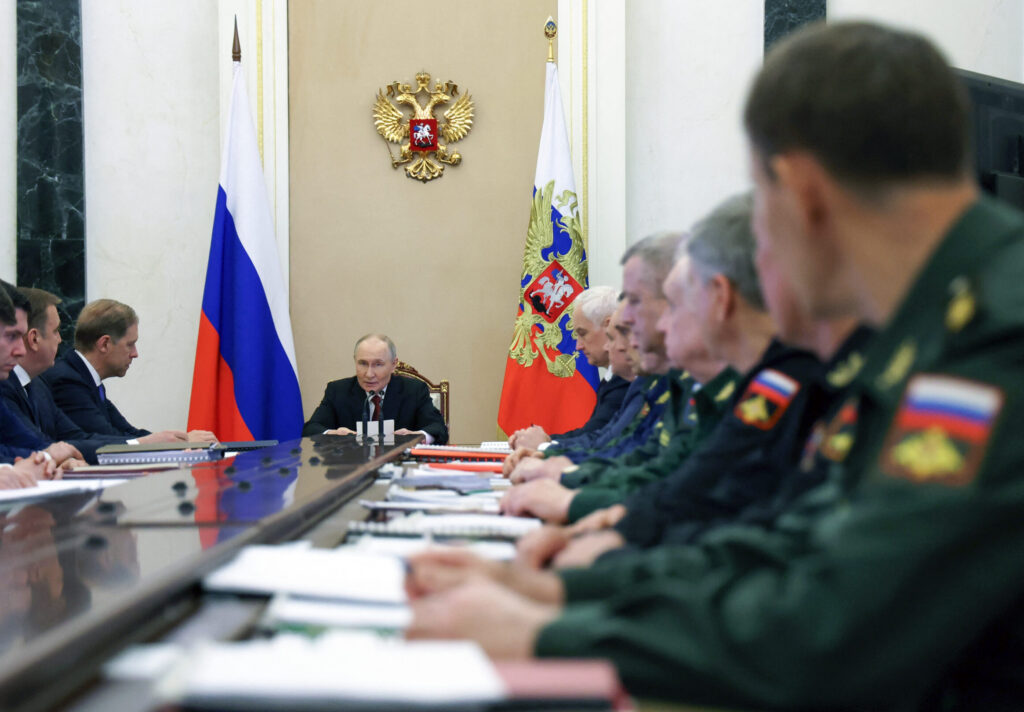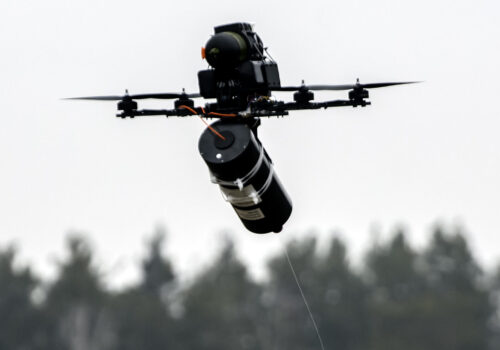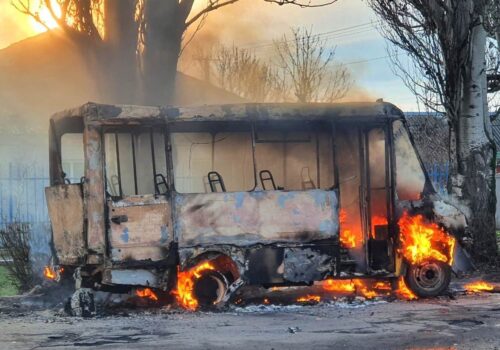Europe and the United States are currently preparing ambitious new sanctions measures targeting Russia’s lucrative oil and gas exports, which play a crucial role in funding Putin’s war machine. However, it is not yet clear if Western leaders have the requisite political will to impose these measures in full.
Published on June 17 just hours after Russia carried out one of its deadliest missile and drone attacks on Kyiv, the EU’s new draft regulation on phasing out fossil fuel imports is arguably long overdue. If adopted, it would deprive the Kremlin of vital budget revenues and potentially prevent Russia from fracturing Europe’s unity through energy blackmail.
Stay updated
As the world watches the Russian invasion of Ukraine unfold, UkraineAlert delivers the best Atlantic Council expert insight and analysis on Ukraine twice a week directly to your inbox.
The EU’s draft regulation lays out several key steps such as a ban on signing new contracts. It calls for phasing out spot and long-term supplies between 2026 and the beginning of 2028, while prohibiting the provision of services at EU terminals for liquefied natural gas (LNG) to customers from Russia or controlled by Russian undertakings.
Importantly, the current draft also includes tough enforcement and transparency measures that would oblige importers of Russian gas to submit all information needed in order to evaluate risks for gas trading and supply security to the European Commission. In line with the proposals, customs authorities would be given greater powers to monitor imports.
The draft regulation aligns with a proposal recently endorsed by the European Parliament to impose tariffs on fertilizers and agricultural products originating in Russia and Belarus. While these measures are underpinned by trade law, which may insulate them from a potential veto from Kremlin-friendly gas buyers such as Hungary and Slovakia, it may take at least another six months to implement them. Even after adoption and implementation, there would likely still be lingering questions regarding the penalties that may be imposed in case of non-compliance.
Earlier in June, the EU presented its eighteenth package of sanctions targeting Russia. This latest package included a ban on any EU operators engaging directly or indirectly in transactions regarding Russia’s controversial Nord Stream gas pipelines. It also proposed to lower the oil price cap from $60 to $45. The slashing of the price cap would inflict significant damage on the Kremlin’s war economy, which is heavily reliant on oil exports. However, the escalating conflict between Israel and Iran, which lifted oil prices more than 10 percent in recent days, may help Russia rake in further income.
Eurasia Center events

While the EU’s latest sanctions package and proposed Russian fossil fuel import phaseout are welcome steps, these measures would still leave sufficient flexibility for the Kremlin to export oil, LNG, and oil products to the rest of the world. Since Russia’s full-scale invasion of Ukraine began in February 2022, Moscow has generated fossil fuel revenues of close to $1 trillion, with only a quarter of this revenue coming from the EU.
The remaining $700 billion has come from sales to large importers such as China, which has been buying oil or oil products often transported by Russia’s shadow fleet of tankers. To clamp down on these grey zone exports, there is a need for a far more determined approach to limit Russia’s international oil and gas trade.
Legislation proposed by US Senators Richard Blumenthal and Lindsey Graham may be the only decisive measure that could tear down Russia’s war machine and safeguard Ukraine’s security. The bill, which benefits from bipartisan support and a supermajority of 84 Senate cosponsors, aims to impose a 500 percent tariff on imported goods from countries such as China or India that buy Russian oil, gas, uranium, and other products.
This bill would send a hard-hitting message not only to Russia but also to any other country which may now feel empowered to attack other sovereign nations without fear of retribution. However, approval ultimately rests with US President Donald Trump. So far, he does not appear ready to give the green light.
For more than a decade, Russia has been using oil and gas exports to pay for its war of aggression against Ukraine, fracture European unity, and consolidate ties with fellow authoritarian regimes around the world. The European Union and United States have prepared measures that could dramatically weaken Russia’s energy weapon and undermine Putin’s war machine. The question now is whether they have the political leadership to proceed.
Dr. Aura Sabadus is a senior energy journalist who writes about Eastern Europe, Turkey, and Ukraine for Independent Commodity Intelligence Services (ICIS), a London-based global energy and petrochemicals news and market data provider. Her views are her own.
Further reading
The views expressed in UkraineAlert are solely those of the authors and do not necessarily reflect the views of the Atlantic Council, its staff, or its supporters.

The Eurasia Center’s mission is to enhance transatlantic cooperation in promoting stability, democratic values, and prosperity in Eurasia, from Eastern Europe and Turkey in the West to the Caucasus, Russia, and Central Asia in the East.
Follow us on social media
and support our work
Image: Russia's President Vladimir Putin chairs a meeting with senior officials and military commanders to discuss the country's new arms programme in Moscow, Russia. June 12, 2025. (Sputnik/Vyacheslav Prokofyev/Pool via REUTERS)





